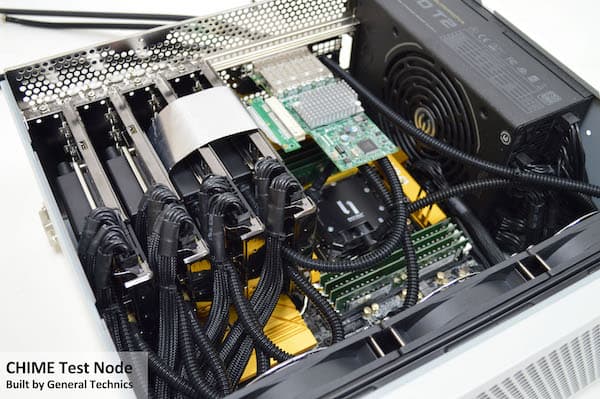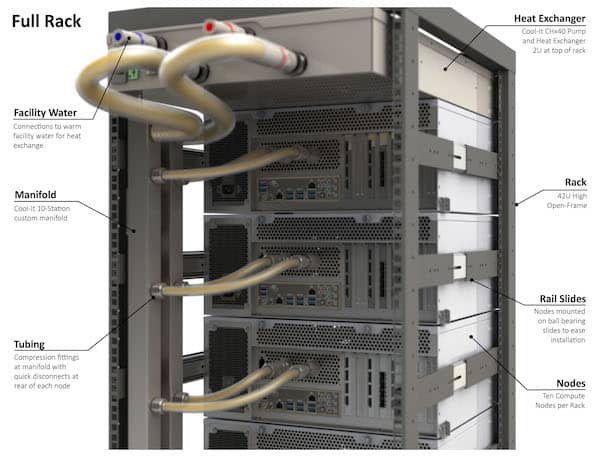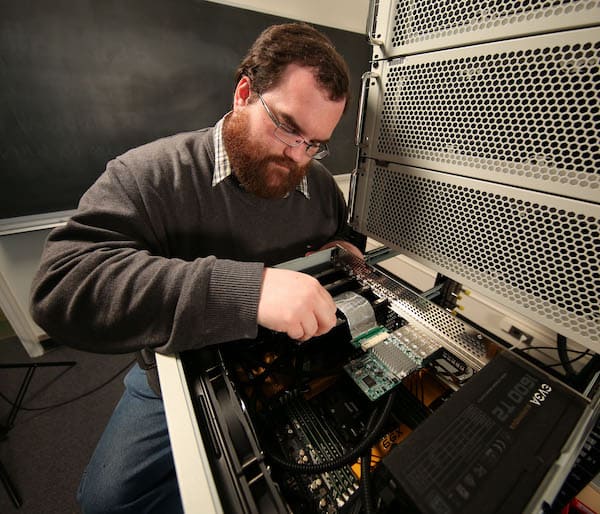Project leads approached General Technics to design a custom chassis for the Canadian Hydrogen Intensity Mapping Experiment (CHIME), an interferometric radio telescope at the Dominion Radio Observatory in British Columbia, Canada. The telescope can quickly map the universe by processing large amounts of data with a supercomputer.

Design Opportunities
The project presented innovation gaps that existing systems could not address:
- Air cooling of the compute clusters was not
sufficient due to the sealing requirements
- This required liquid cooling for each of the 1,024 high-end GPUs and the 256 CPUs
- Each rack of ten compute nodes has individual liquid-cooling fluid circuits, which ultimately exchanged heat with ambient air
- Each node also had to house four GPUs, a Quad 10 GbE network card, and a titanium efficiency 1600W power supply
- Packaging of the chassis was limited by available space within shielded containers to allow individual accessibility repairs

Cost Optimization
General Technics was able to optimize the system cost by leveraging existing production components and orienting them efficiently on the custom chassis. Employing liquid cooling led to the use of smaller system components and improved system longevity by enabling cooler operating temperatures.
The design team used waterblocks to accept AMD R9 Fury X cards beside the network card. They also chose an ASRock X99 OC Formula enthusiast-class board to provide multi-lane PCIe support and add supplemental GPU capacity. The board’s water-proof coating was a low-cost feature that further mitigated risk of fluid leakage.
Using existing, customizable components with a custom chassis leverages high-volume price efficiencies while allowing your design partner to create a system tailored to the specific application and realizing a cost-favorable architecture.
Learn more about the entire process for the CHIME custom chassis, or find out about custom chassis design for your project.

